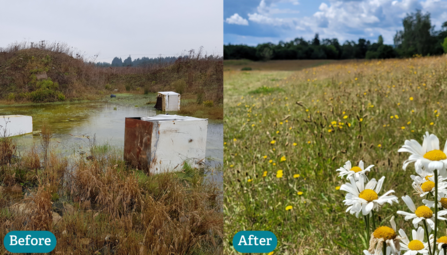As part of the Saving Worcestershire’s Heathlands project, we support communities on the borders of our beautiful heathlands to improve biodiversity in their local greenspaces. By enhancing habitats and creating wildlife corridors on our own land and throughout neighbouring communities, we are creating stepping stones for wildlife travelling through the landscapes. One of the options available to communities in Worcestershire is our incredible Natural Networks project.
Now in its seventh year, Natural Networks aims to give conservation advice for greenspaces that otherwise fall through the gaps. Where sites are eligible, officers from the Trust carry out a Biodiversity Enhancement Assessment (BEA), which aims to direct projects towards actions that enhance land for wildlife in the most appropriate way. Staff from Worcestershire County Council can then offer guidance on submitting an application for a grant of up to £15,000 (representing up to 70% of the total project cost) to help communities carry out the recommendations suggested in the BEA report.
Working across Worcestershire, Natural Networks has surveyed and provided wildlife advice for over 230 sites, working with a variety of parish, town and district councils, small business owners, allotment groups, faith groups and other environmental charities. Although these greenspaces are usually small and often not designed with nature in mind, these small areas can create excellent habitats.
Within the Wyre Forest district, we have worked across 52 sites. Here are some of our favourite projects that help to connect our heathland reserves to the surrounding landscape.




